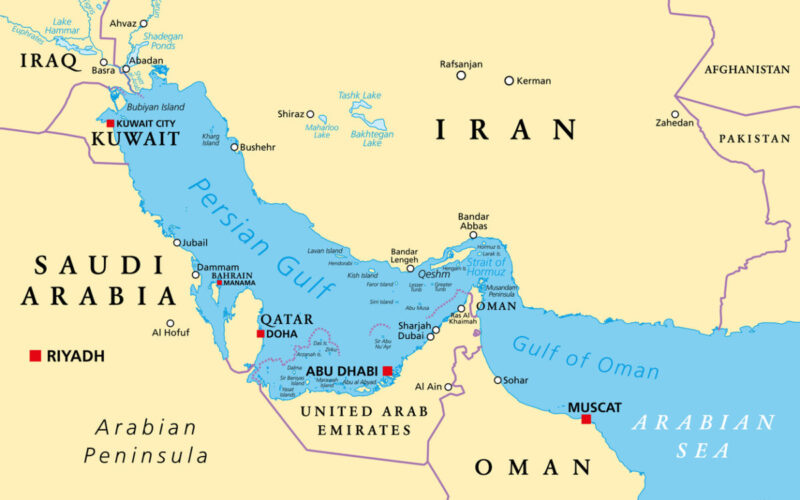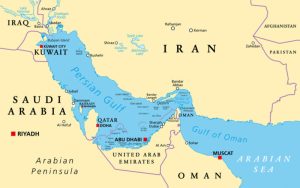Explore how regional politics shape Persian Gulf port logistics. Understand the strategic importance, key disruptions, and future outlook affecting maritime trade in one of the world’s most contested shipping regions.
Why the Persian Gulf’s Port Logistics Matter in Global Maritime Trade
At the crossroads of ancient maritime routes and modern oil shipping lanes, the Persian Gulf is more than just a body of water—it’s a geopolitical pressure point. The region, bordered by Iran, Iraq, Kuwait, Saudi Arabia, Qatar, Bahrain, the UAE, and Oman, hosts some of the busiest ports and chokepoints on the planet, including the Strait of Hormuz. Roughly 21% of global oil consumption passes through this strait daily, according to the U.S. Energy Information Administration.
Yet, the logistics behind moving cargo here—especially petroleum, LNG, and manufactured goods—aren’t only influenced by demand and infrastructure. They are deeply shaped by regional politics, rivalries, sanctions, and even diplomacy.
Understanding how these political dynamics affect port logistics is crucial not just for regional stakeholders, but for global maritime professionals, shipping companies, and supply chain managers.
Political Influence: The Silent Navigator of Persian Gulf Logistics
Port logistics in the Persian Gulf cannot be separated from politics. Unlike some regions where infrastructure determines throughput, here it’s diplomacy, military tensions, and shifting alliances that often dictate the flow.
Maritime Chokepoints and Military Presence
The Strait of Hormuz is perhaps the best-known bottleneck. Iran has repeatedly threatened to block this passage in response to Western sanctions or regional disputes. This not only raises insurance premiums on cargo vessels but forces ships to reroute or delay voyages, causing ripple effects in global markets.
According to a 2023 Lloyd’s List Intelligence report, up to 10% of tanker voyages in the Gulf experience operational delays linked to military exercises or patrol activity—especially when involving the U.S. Navy’s Fifth Fleet or Iranian Revolutionary Guard Navy.
Sanctions and Their Ripple Effect
The U.S. and EU sanctions on Iran have had profound impacts on its ports, especially Bandar Abbas and Khorramshahr. Port operators have struggled to secure spare parts, digital tracking systems, or even international shipping contracts.
This has shifted maritime traffic toward Jebel Ali Port (UAE) and Hamad Port (Qatar), which offer more politically neutral or globally accessible alternatives. But this also leads to congestion and competitive overreach, as ports compete for dominance in a politically fragmented landscape.
Key Developments Reshaping the Persian Gulf’s Maritime Landscape
Even amidst political uncertainty, Gulf nations are investing heavily in port infrastructure and smart logistics.
UAE’s Smart Port Initiatives
Jebel Ali Port, operated by DP World, has been a trailblazer in implementing digital twin technology and AI-based cargo routing systems. It recently joined the International Association of Ports and Harbors’ (IAPH) initiative for sustainable and resilient port networks.
This tech-forward approach, alongside automated cranes, blockchain-enabled customs clearance, and IoT container tracking, helps insulate UAE’s maritime trade from regional disruptions.
Saudi Arabia’s Vision 2030 and Port Transformation
Under Vision 2030, Saudi Arabia is pouring billions into King Abdulaziz Port (Dammam) and King Abdullah Port, aiming to handle 40 million TEUs annually by 2030. Their National Transport and Logistics Strategy (NTLS) is designed to make Saudi Arabia the next Red Sea–Persian Gulf intermodal bridge.
But political tensions with Iran, and a cautious relationship with Qatar post-GCC blockade, still cloud full integration.
Qatar’s Resilient Port Strategy
Hamad Port rose in prominence following the 2017 Qatar blockade, when neighboring Gulf states severed diplomatic and trade ties. The port quickly adapted by establishing new shipping lanes to Turkey, Iran, and India and increasing investment in cold storage, warehousing, and Ro-Ro capabilities.
Its flexibility during the crisis made it a case study in geopolitical resilience, as cited in the Maritime Economics & Logistics journal (2022).
Case Study: How Regional Disputes Disrupt Maritime Operations
Let’s consider the 2019 Gulf Tanker Attacks.
Six oil tankers were damaged near the Strait of Hormuz under suspicious circumstances. While no nation claimed responsibility, tensions between Iran and the U.S. escalated quickly.
Immediate Consequences:
-
Lloyd’s Market Association listed the region as a high-risk war zone.
-
War risk premiums surged by 200% for ships transiting the Strait.
-
Some carriers, including Maersk and MSC, diverted routes or paused services.
-
Port calls at Bandar Abbas and Fujairah dropped nearly 20% in Q3 2019, according to MarineTraffic.
This real-world example underscores how political conflict can override even the best infrastructure, disrupting cargo flow, endangering crews, and driving up operational costs.
Challenges and Emerging Solutions
Despite their wealth and ambition, Persian Gulf states face several entrenched logistical challenges made worse by politics.
Fragmented Customs and Regulatory Frameworks
Unlike the EU, Gulf countries lack unified port regulatory standards. A ship entering the UAE may need completely different documentation than one entering Saudi Arabia.
Efforts by the Gulf Cooperation Council (GCC) to harmonize these systems have largely stalled due to interstate rivalries and differing national security policies.
Maritime Labor Uncertainty
Political tension often affects crew welfare. The ITF (International Transport Workers’ Federation) has repeatedly highlighted the legal limbo faced by seafarers during diplomatic disputes, especially those flagged under sanctioned nations or transiting embargoed routes.
A 2023 ITF report noted a 13% increase in crew detention cases in Gulf ports due to unclear paperwork or suspected sanctions violations.
Port Cybersecurity Risks
The increasing digitalization of Persian Gulf ports opens up new vulnerabilities. In 2021, reports emerged of cyber espionage against Iranian and Emirati port systems, allegedly linked to state actors.
To address this, ports like Jebel Ali and Dammam have partnered with Inmarsat and Wärtsilä Voyage to create secure communication and navigation channels using satellite encryption.
Future Outlook: Toward Greater Resilience or Continued Fragmentation?
Regional Collaboration vs. Strategic Competition
While infrastructure is booming, political cooperation remains tepid. Initiatives like the GCC Rail Link, which would connect Gulf ports by land, could transform regional trade—but have stalled repeatedly due to mistrust and diverging political agendas.
However, younger political leadership in countries like Qatar and the UAE, and economic necessity amid global decarbonization, might foster more collaboration around green corridors, hydrogen bunkering, and zero-emission logistics.
Climate Policy and Political Leverage
The IMO’s GHG Reduction Strategy (2023) and EU’s Carbon Border Adjustment Mechanism (CBAM) are pressuring Gulf nations to align with green logistics trends. This might serve as a neutral platform for regional cooperation—since emissions control transcends political disputes.
Saudi Arabia, UAE, and Qatar are now investing in LNG bunkering hubs, shore power, and carbon capture for port operations, as detailed in the 2024 edition of World Port Sustainability Review.
Frequently Asked Questions (FAQ)
Why is the Persian Gulf so important to global shipping?
It’s home to major oil exporters and the Strait of Hormuz—a chokepoint where 21% of global oil trade transits daily.
How do politics affect shipping in the Gulf?
From sanctions to military tensions, regional politics can disrupt port access, delay cargo, raise insurance costs, and create legal uncertainty for shipowners.
Which Persian Gulf port is the busiest?
Jebel Ali Port (Dubai, UAE) is the region’s busiest and most technologically advanced, handling over 13 million TEUs annually as of 2023.
How did Qatar respond to the 2017 blockade?
By upgrading Hamad Port, diversifying trade routes, and forging new alliances with Turkey, Iran, and India.
Are there international regulations to protect ships in conflict zones like the Gulf?
Yes. Port State Control regimes, the IMO’s ISPS Code, and war risk insurance frameworks aim to ensure crew and cargo safety.
What is the future of port logistics in the Gulf?
While technology and green shipping are advancing, true resilience will depend on whether Gulf states can cooperate beyond politics.
Do political tensions affect container and bulk carriers equally?
No. Tankers carrying oil or sanctioned goods are more likely to be inspected or delayed, while container and bulk cargoes may face fewer direct disruptions—unless caught in wider sanctions.
Conclusion: Ports Thrive When Politics Cooperate
The Persian Gulf offers an extraordinary case study of how regional politics directly influence port logistics. No matter how advanced the cranes, how deep the berths, or how smart the software—if diplomatic tensions remain high, disruptions will follow.
But there is also hope. By investing in green corridors, adopting digital security, and participating in international regulatory frameworks, Persian Gulf nations can chart a course toward resilient, integrated maritime logistics.
For maritime professionals, students, and policymakers, the Gulf teaches a vital lesson: Trade doesn’t just follow geography—it follows geopolitics.
References
-
U.S. Energy Information Administration. (2024). World Oil Transit Chokepoints. Link
-
Lloyd’s List Intelligence. (2023). Middle East Risk Outlook.
-
MarineTraffic. (2023). Gulf Port Activity Reports. Link
-
International Maritime Organization. (2023). GHG Reduction Strategy. Link
-
ITF Seafarers. (2023). Detained Seafarers Report. Link
-
Maritime Economics & Logistics. (2022). Hamad Port During the Qatar Crisis.
-
BIMCO. (2023). War Risk Premiums in the Gulf. Link
-
World Port Sustainability Review. (2024). Green Port Innovations in the Gulf.
-
Wärtsilä Voyage. (2023). Cybersecurity in Port Operations. Link
-
Inmarsat Maritime. (2024). Smart Port Communication Systems. Link


